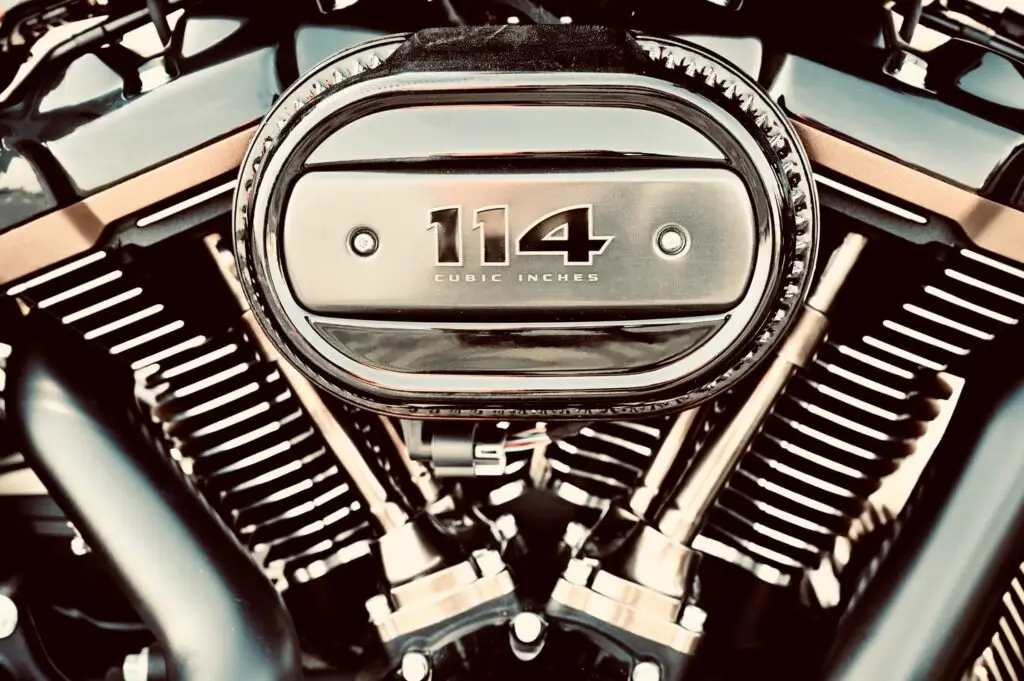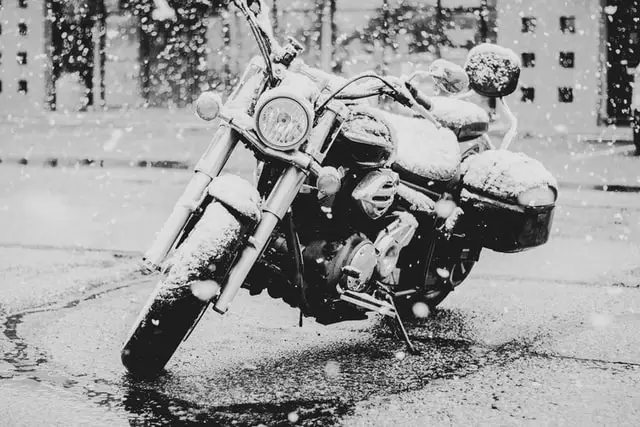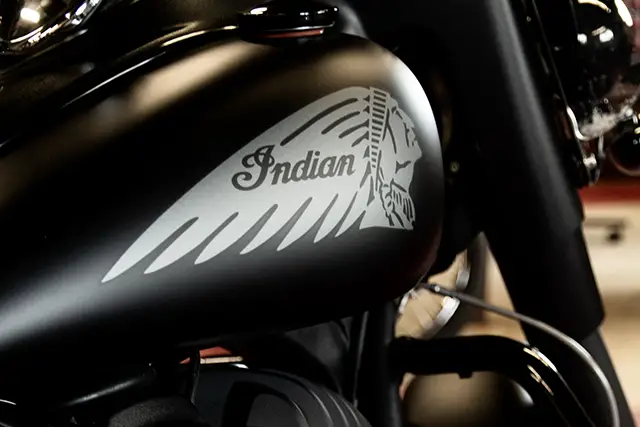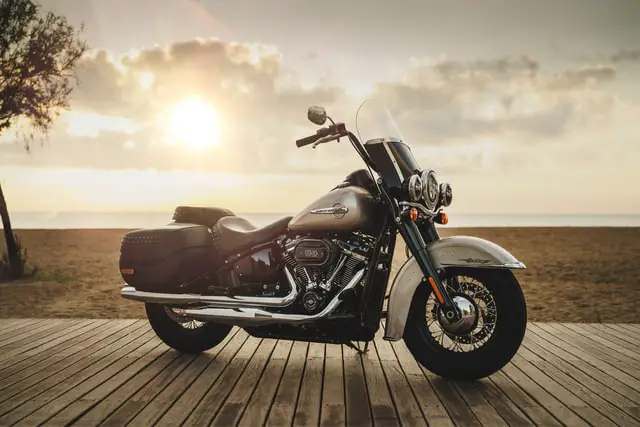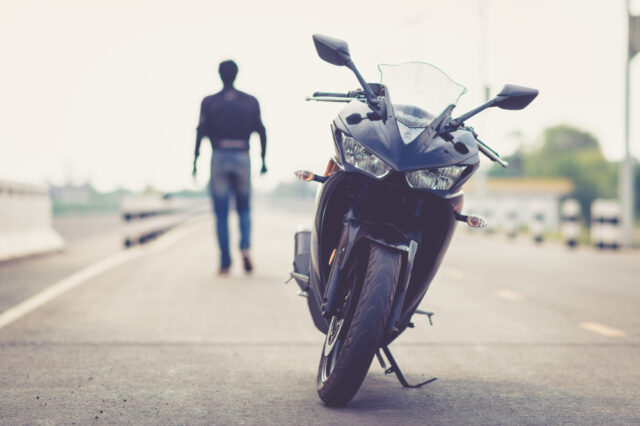Why Do Motorcyclists sometimes swerve right and left or change lane Positions?
Can’t they pick a spot already?
And would it not be better to stay in the middle of the lane?
Why Do Motorcyclists Change Positions In Their Lane?
The most frequent purpose for bikers to move in their lane is to dodge road hazards. These include manhole covers, patches of oil, debris, etc. There are other reasons for shifting in a lane, such as better positioning before taking a curve in the road.
Here is the list of the motives for motorcycles riders to change position in their lane.
- Avoid road hazards (There are more than you think).
- Get a better line of sight and angle of attack to handle a bend in the road.
- In preparation to execute tight turning maneuvers.
- Proper lane positioning prevents car drivers to invade motorcyclists’ space.
- Attracting attention by swerving left and right while coming up to an intersection.
- Keeping an escape path open to avoid being rear-ended.
- Swerving right and left is fun on a bike.
Changing lane position to Dodge roads hazards
It is similar to what car drivers do when trying to avoid stepping into a pothole.
It is the same for us riders, we try to swerve out of the way if we see a potential issue ahead of us.
The difference is that motorcycles riders got a lot more stuff to worry about than cars.
A lot of things on the pavement are not hazardous to 4-wheelers, but they are to motorcyclists.
It might explain why car drivers scratch their heads when it isn’t apparent why we riders swerve in our lane.
For example, an empty plastic bottle might be harmless to run over with a car and hear the satisfying ‘’crunch and pop’’. (I am guilty to do so every time I can) 🙂
But for a motorcycle, that water bottle is enough to make bike tires lose their grip.
A bike that lost traction might result in the motorcycle and its rider falling on the ground.
So anything remotely suspicious or hazardous, motorcycles riders will reposition away from it.
Here are a few examples motorcycle riders try to avoid stepping on.
- ‘’Tar Snakes’’ black sealant used to repair cracks in the asphalt (slippery)
- Freshly cut grass clipping standing in the road (slippery)
- Patch of oil or unidentified liquid (slippery)
- Loose sand and gravel (slippery)
- Standing water (aquaplaning)
- Manhole covers (impact and slippery)
- Botched pavement and repair patch (impact)
- Potholes and cracked asphalt (impact)
- Miscellaneous Debris (impact)
Changing Lane Position For Better Line Of Sight And Angle of Attack To Handle A Bend In The Road.
It is one of the most basic maneuvers that motorcycles riding school teach new riders.
When coming up on a curve, a biker should position itself on the opposite side of the bend direction.
For example, if the road turns left, the biker should move to the right side of the lane before going in the bend.
The benefit of such a maneuver is to increase the line of sight to see farther into the bend.
It reduces the chance of surprises if there is an obstacle or something else to slow down for ahead on the road.
The second reason to choose this lane positioning is that it makes it easier to ‘’lean’’ into the curve.
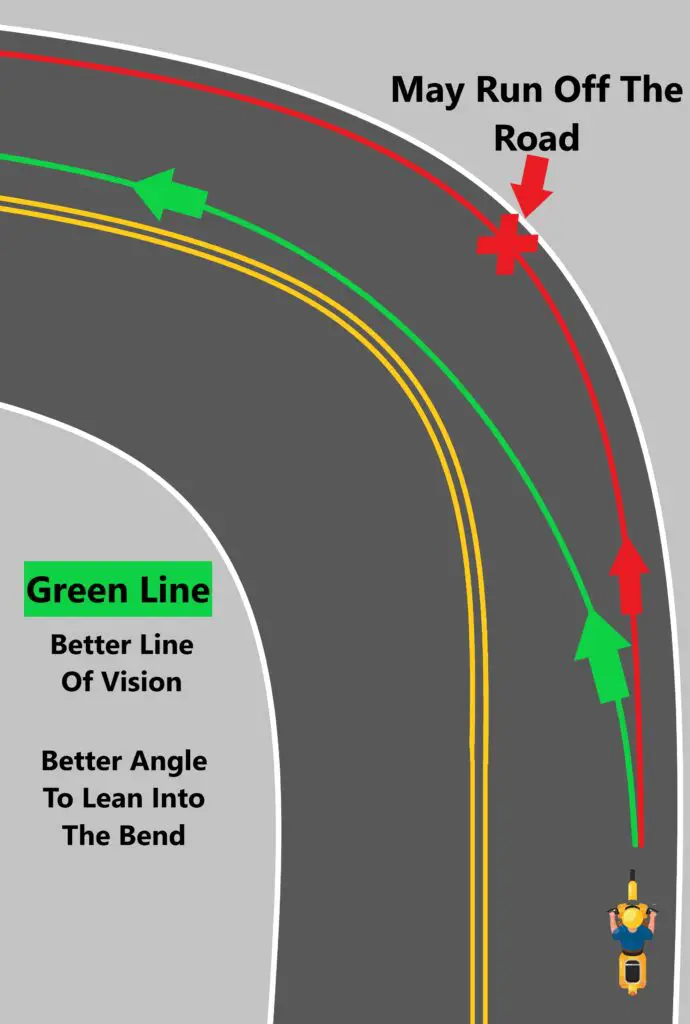
Better Positioning To Execute Tight Turn Maneuvers.
It is easier for motorcyclists to make turning maneuvers when on the opposite side of the lane from the direction they wish to go.
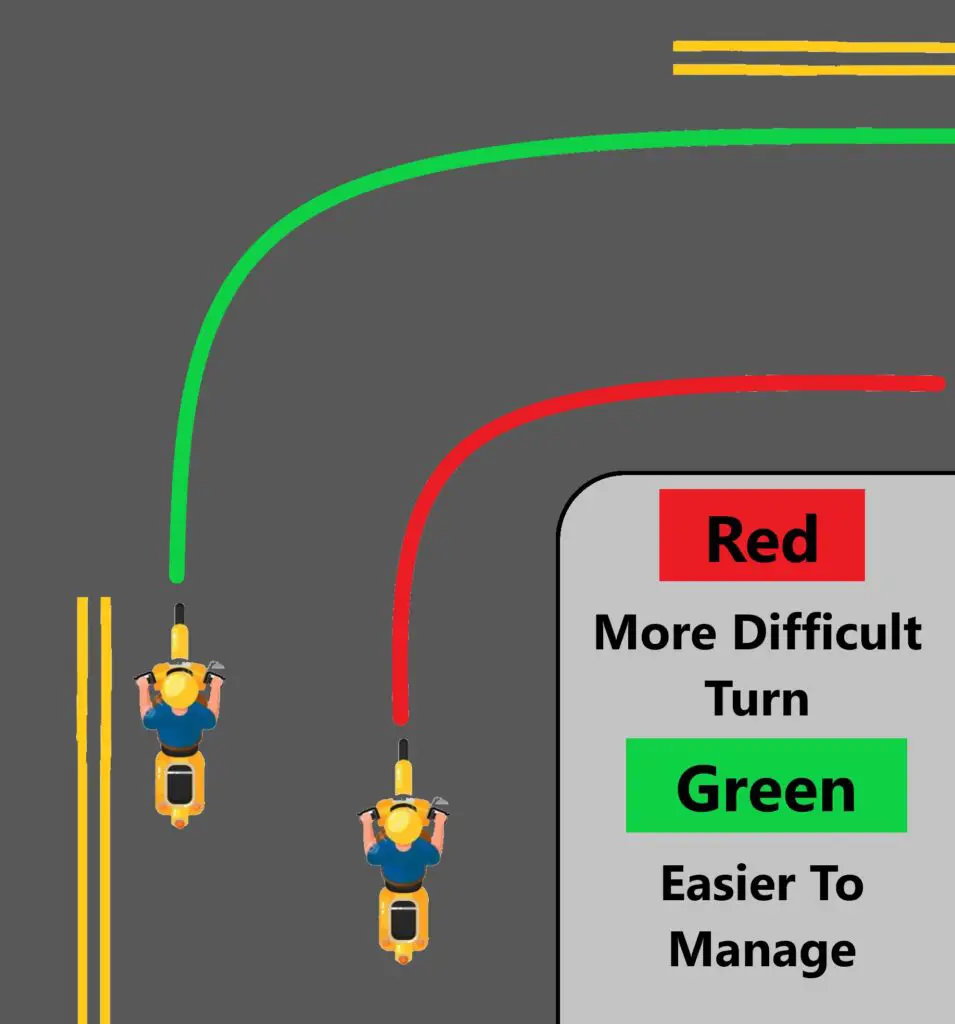
Movement Visibility By Swerving Left And Right While Coming Up To An Intersection.
Turning vehicles that fail to see a motorcycle coming in their path are typical collision scenes for motorcyclists.
Because motorcycles are so small;
- They are harder to notice.
- It is also difficult to evaluate their incoming speed.
Swerving right and left before an intersection on a bike will help a motorcyclist to get noticed.
The lateral motion will often catch the eye of motorists who want to turn at the intersection but didn’t yet see the biker.
Keeping An Escape Path Open To Avoid Being Rear-Ended.
Motorcyclists are vulnerable when they are the last vehicle in a line of slow or stopped traffic.
In that situation, riders will often reposition themselves to the extreme left or right of their lane.
The purpose is to be as close as possible to the best escape path available to the motorcyclist at the time.
A rider will then watch their mirror for vehicles coming up behind them.
If they suspect they are about to be rear-ended, the motorcyclist will be in an excellent position to ride out of the way.
Proper Lane Positioning Prevents Other Roads User To Invade Motorcyclists’ Space.
A following car might see the space in the lane that a motorcycle does not use as an invitation to pass the biker… In the same lane. 😡
Way to give a rider a heart attack and run them off the road when they see an unexpected car 1 foot right beside them that is not supposed to be there.
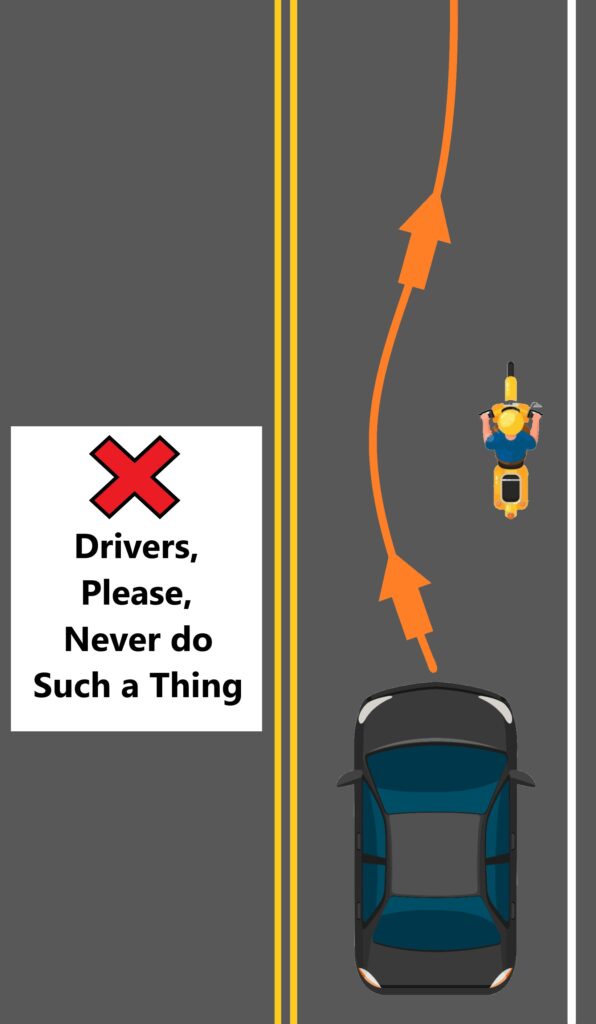
So a rider defense against such bull@$%? Is to ride in the part of the lane that optimally blocks cars from passing them in that manner.
On a road with multiple lanes, the best position for a rider will change depending on what lane the bike is in.
- Right lane; Motorcyclist in the left part.
- Center lane; variable. Motorcyclists should avoid riding in the middle lane if possible
- Fast or left lane; Motorcycle should stay in the right part.
Swerving Right And Left On A Bike Is Fun
I am incredibly guilty of this one.
In particular, when riding on a straight road with a lower speed limit zone (25-40mph)
When you are restricted to riding in a straight line at these speeds, it gets boring pretty quickly.
So what can you do to keep some of the boredom away; starting to swerve back and forth gently in the lane.
What? You never swerved back and forth on a bicycle?
It’s the same thing for a motorcycle; It doesn’t serve any purpose. It just feels good.
What Are Lane Positions For Motorcycles?
A road lane can subdivide into three-part for motorcycle use.
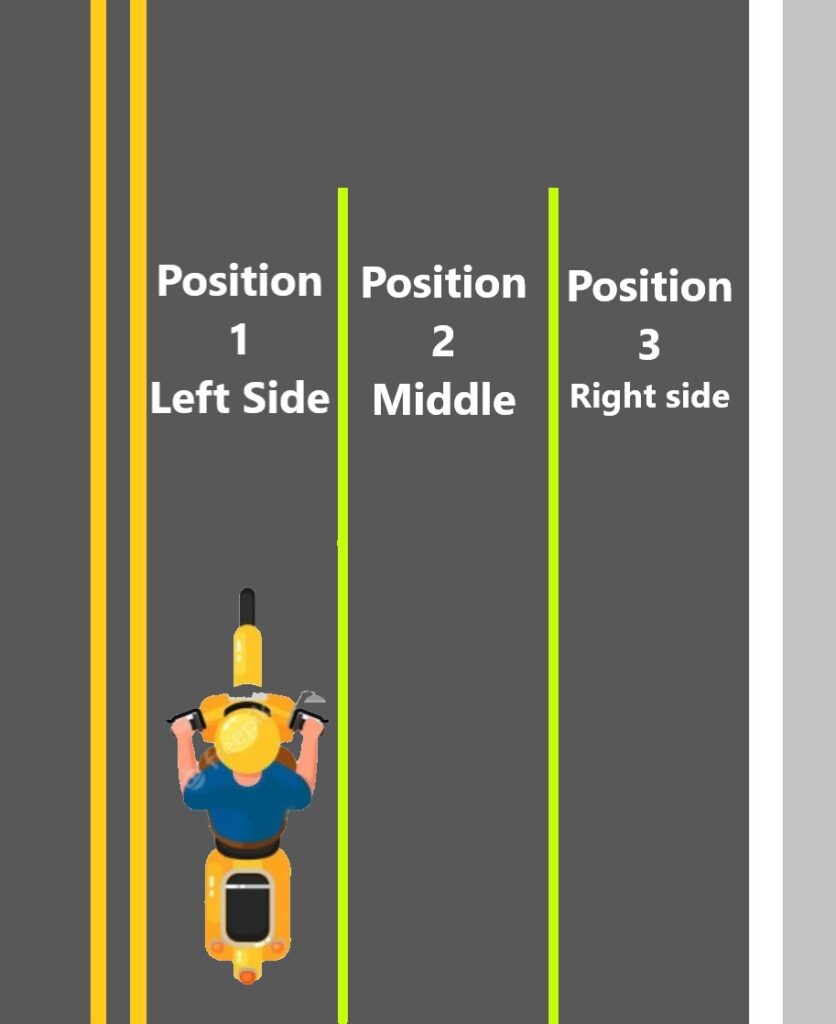
Left Side Of The Lane
Most of the time, on a single-lane road, riding close to the centerline is the best place for a motorcycle.
Unless you are in a part of the world like the UK that drives on the other side of the road, then it’s the other way around.
At first glance, it might seem counter-intuitive since it put a rider closer to incoming traffic.
But there are many reasons we bikers prefer to stand there if you wish to know why, I wrote a dedicated article where you can learn why motorcycles ride close to the yellow centerline.
Why Don’t Motorcycles Ride In The Middle Of The Lane Instead?
We riders can, but we prefer not to.
It is where all the oily liquids from leaky vehicle engines accumulate on the road.
- Engine oil
- Coolant
- Gasoline
- Diesel
It is a hell of a greasy and slippery cocktail to stand on for motorcycles.
Bikers should try their best to stay off the center part of a lane.
Right Side of the Lane
The right side is not the preferable choice most of the time, but it has situational uses.
- Before entering a left turn.
- Moving out of the way of hazard on the road.
- Blocking car drivers to pass in a dumb way on the right while in the fast lane.
Unless motorcyclists ride staggered in a group, we don’t use the right side of a lane that often or for that long.
The edge of the road on the right is often uneven, and it is where small sharp debris often pile up such as nails and screws, so motorcycles try to stay clear.
Conclusion
So why do we motorcycle riders change lane position from time to time?
Suppose there is a dead carcass of an animal or a pothole on the left, moving to the right is logical. Dha!
But sometimes, the obstacle a rider wishes to avoid is not that obvious such as a patch of oil.
Riders also shift lane position for better position before a turn or corner maneuver.
We change our position to block cars that want to pass the motorcycle in an ‘’impolite’’ way on our vulnerable side.
Before crossing an intersection, motorcycles will sometimes swerve back and forth. It attracts attention and increases the motorcycle visibility.
Riders will stand on the edge of a lane while stopped or moving slow. It keeps an escape plan ready to avoid rear-end collision if the rider can see it coming.
Lastly, boredom might be the reason why a rider is shifting in its lane.
Swerving gently back and forth on a bike feels as good for a rider as it feels good for a baby being rocked in its crib.
So if the next time you see a motorcycle change its lane position, you will probably know why.
Take care.
Drive and Ride Safe
Want to Do an Easy Good Deed?
I put a lot of love into my writing work, and it requires tons of coffee to stay focused.
You found useful information for yourself in my post? I would be honored and sincerely appreciate it if you returned the favor.
Thank you so much if you do. 🙂
External picture sources in order of appearance

